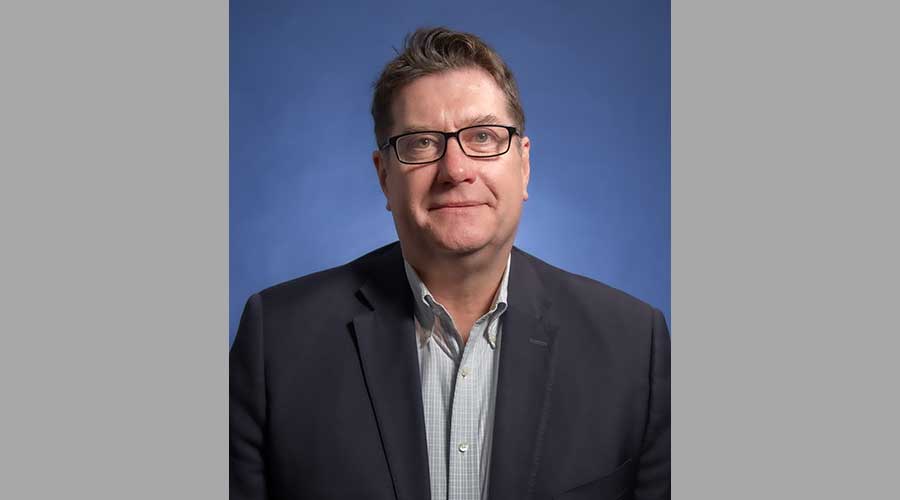Stay updated on news, articles and information for the rail industry
May 2014
Rail News: Passenger Rail
MARTA officials implement reforms aimed at creating a more efficient and accountable organization
— by Angela Cotey, senior associate editor
For the Metropolitan Atlanta Rapid Transit Authority (MARTA), 2012 was an eventful year. Georgia voters failed to pass a transportation referendum that would have helped fund a long-awaited transit system expansion. The agency also received the results of a year-long management and operations audit that unveiled jarring inefficiencies, budget shortfalls and employee morale issues. And, the MARTA board was on the hunt for a new general manager and chief executive officer to replace Beverly Scott, who would step down once her contract expired at the end of the year.
In many respects, 2012 was merely the latest in a string of challenging years for the agency, which has operated rail service in the Atlanta metropolitan region since 1979. MARTA was particularly hard-hit during the Great Recession; the agency is the largest in the United States that doesn't receive state funding, so it relies almost entirely on farebox and sales tax revenue to cover operating and capital expenses. The recession and resulting revenue shortfall forced agency executives to hike fares, slash service, eliminate jobs and freeze wages between 2009 and 2012. Agency execs also had to plow through reserves to keep MARTA afloat. The moves left customers unhappy and employees dissatisfied. Meanwhile, state legislators — many of whom had long questioned the agency's management and operations — were more critical than ever.
MARTA officials knew they had to make some major changes to repair the agency's image, implement audit recommendations and address financial woes. To help right the ship, the board in October 2012 named Keith Parker as the next GM and CEO. Known for his diplomacy and ability to communicate the benefits of and need for transit to a variety of audiences, Parker headed San Antonio's VIA Metropolitan Transit prior to joining MARTA. There, he helped garner political and public support for the city's first modern streetcar system. Before that, Parker was CEO of the Charlotte Area Transit System, where he was charged with rebuilding public trust in the agency after light-rail construction costs ballooned, leading to a public and political backlash.
With Parker at the helm, MARTA has spent the past 15 months working to address budget issues and pare back expenses, implement accountability measures, and improve relationships with customers, employees and state legislators.
Still, there's plenty more work to be done. Morale improvements don't happen overnight, public perception is difficult to change and service improvements only can be made incrementally. But Parker believes that over time, MARTA can become a more efficient and accountable organization that promotes a culture of "routine excellence." If that happens, MARTA could be better positioned to finally implement long-planned expansions.
"We have to get our house in order so we can take away all the legitimate arguments people may pose to investing in the system," Parker says. "We will be more efficient, more customer friendly and more employee friendly."
That mission — and the challenges associated with carrying it out — are what captured Parker's attention nearly two years ago, when a recruiting firm contacted him about the MARTA post. At the time, Parker wasn't looking for a new job. He had just started his third year as president and CEO of VIA, which had been named Outstanding Metropolitan Transit System by the Texas Transit Association for the second-straight year. The association had recognized Parker as Outstanding General Manager in 2011 and 2012. Ridership at the San Antonio system was at an all-time high, construction had begun on the region's first bus rapid transit line and the agency had completed a long-range transit plan that included a proposal for the city's first modern streetcar system.
The MARTA position also would enable Parker and his wife, both Virginia natives, to move back to the eastern part of the United States, where they could raise their children closer to family. And professionally, it would pose the greatest challenge of Parker's career.
"This is the most complex transit position in the country," he says. "People will argue that New York is bigger or that Boston has more trains and buses, and while that's true, nobody in New York or Boston questions the validity of mass transit. We still have that battle here in Georgia."
It's a battle MARTA board members believe Parker is well suited to fight.
"Our management and operations review, and some of the changes we're making, have been an ongoing process for quite some time," says MARTA Chairman Robert Ashe. "But Keith has come in and taken ownership of it, and put into place an executive management team that is accountable for it and responsible for identifying opportunities that go above and beyond."
One of Parker's first orders of business: address the agency's finances. MARTA was facing a $33 million deficit in fiscal year 2013, and was at risk of becoming fiscally insolvent within three to five years.
For starters, Parker cut the equivalent of five senior-level management positions that saved the agency about $1 million. He also brought in a few new faces, one of them Gordon Hutchinson, Amtrak's former acting chief financial officer, who also has held senior-level finance positions at a variety of companies, including PricewaterhouseCoopers.
"Keith's directive was to improve processes with an eye toward greater efficiency, both within the finance function and broadly for the agency," says Hutchinson, who now serves as MARTA's CFO. "He wanted to implement more of a business focus when it came to running the agency."
A balanced budget
To that end, MARTA management decided to eliminate unfilled positions that were not deemed critical to the agency's operations; restructured outstanding debt, saving about $5 million; revamped the information technology department, cutting about $14 million in costs; and automated and/or streamlined some internal functions, such as switching to a 100 percent paperless payroll system.
As a result of the changes, MARTA in FY2013 balanced its budget for the first time in 15 years, and turned the $33 million deficit into a $9 million surplus, says Parker. Hutchinson expects the agency to net an even larger surplus in FY2014, which ends June 30.
"We've had the good fortune in 2014 of having increasing sales tax receipts," he says. "We expected that to a certain extent because of the improving regional economy in metro Atlanta, but it has exceeded expectations."
The additional dollars have helped replenish reserves, and also will enable the agency to "reinvest in its business," says Hutchinson.
"Our intent is not to earn a profit," he says. "So once our reserve levels are adequate, we will use the funds available to us to provide the best level of service we can to the riding public."
And when it comes to the riding public, MARTA officials have some relationship-mending to do. The agency's previous management team slashed rail and bus service between 2008 and 2012, and at the same time hiked fares by more than 40 percent, says Parker, adding that these were rational decisions to make in the face of MARTA's severe revenue shortfalls during the recession.
"But our [service] frequency is not anywhere near where it needs to be right now," he says.
In December 2013, MARTA increased evening rail service. This summer, the agency plans to double rail service during peak hours on all lines. The service increase will be funded in part through the cost savings MARTA has garnered during the past 18 months.
"Ultimately, we believe this will result in increasing ridership, and of course with that will come additional revenue," says Hutchinson.
Agency execs also eliminated another fare increase that had been scheduled for October 2013. Going forward, MARTA officials hope to implement fare increases only every other year, based on changes in the Consumer Price Index, says Hutchinson.
To help keep ticket prices down, MARTA plans to soon roll out a campaign targeting fare evasion, reminding riders that "everyone needs to pay their fair share," says Hutchinson.
Parker & Co. also are cracking down on inappropriate behavior on buses and trains by reinforcing the Ride with Respect campaign MARTA launched in 2012. The initiative was designed to encourage passengers to be courteous and raise awareness of behaviors that might irritate fellow riders. In late 2013, agency managers took it one step further by implementing a new code of conduct policy that assesses penalties, including possible suspension from the system, for passengers that solicit others, play loud music, spit, litter, fight or exhibit disruptive behavior. So far, the agency has suspended about 700 people, says Parker.
"We've been holding folks accountable, taking a zero-tolerance approach to bad behavior on trains and buses, and customers have responded really well to that," he says.
MARTA officials are working to improve employee relations, too. During the recession, the agency laid off hundreds of workers and implemented unpaid furloughs for non-union staff. Most employees received only one raise in the past decade, and no pay increase for seven years. As a result, employee morale was low, and absenteeism was costing the agency about $11 million annually, according to the audit report conducted by KPMG L.L.P.
"There was not a lot of pride in wearing the MARTA badge, and we knew we had to make some investments in our employees to turn things around," says Parker.
MARTA officials were able to use some of the money saved through cost-cutting measures to give non-union employees a 3 percent bonus in late 2013; execs still are negotiating bonus amounts for union employees, Parker says.
The agency also is making more of an effort to promote workers from within and provide leadership training opportunities. One example: MARTA recently joined the Multi-Agency Exchange, or MAX, program, a cross-agency leadership development and learning exchange. Dallas Area Rapid Transit, the Denver Regional Transit District and Los Angeles County Metropolitan Transportation Authority also participate. Eight mid-level managers from each agency are selected to visit the other systems so they can learn best practices and network with other agency leaders.
Cost-cutting measures
Meanwhile, more cost cuts are coming. For example, the KPMG audit found that the agency's health care claim, retirement and workers' compensation costs are $50 million higher than national averages, including both private- and public-sector employers. To address it, agency execs plan get employees more involved with their health care by encouraging a greater focus on wellness and asking workers to have health screenings, says Hutchinson.
"Over time, we can reduce what we have to spend on health care," he says. "And it's been proven that organizations can then get a healthier workforce and fewer sick time absences, and that in turn generates greater productivity and savings to the agency."
Other cost-saving measures, as recommended by the audit, could include hiring third-party firms to perform specific functions, either internally or externally, such as computer support, customer service, recruiting and cleaning services. MARTA officials currently are looking into automating and outsourcing the parking system, says Hutchinson.
The audit also recommended revenue-generation initiatives, such as wrapping more vehicles with advertising, developing a billboard program for properties and facilities, expanding food and beverage concessions and implementing a program for station naming rights. MARTA also is working to expand its transit-oriented development efforts to help generate lease income on the properties it owns, Hutchinson says.
In the meantime, the senior management team is tracking key performance indicators such as budget variances, ridership, cost per revenue mile, on-time performance and mean distance between failures. The team generates a monthly report that compares the indicators to budgeted amounts, performance targets and previous reports, so executives and board members can review the metrics and note any improvements or variances.
"It's based on the real simple management philosophy that what gets measured gets managed," says Hutchinson. "You have to have a system of objective measures and you have to review it in order to get effective management and accountability for performance and results."
You also have to communicate it, Parker says.
"One of the worst things you can do as a manager is not have people know what you're doing," he says.
That's why Parker has been working to ensure MARTA customers, state and local politicians, and business groups are aware of the changes being made at the agency, and how they're helping MARTA improve service quality and the bottom line. He regularly communicates with the Georgia governor and lieutenant governor, and has held nearly 150 public meetings with various rotary clubs, church groups and other local organizations.
"My message to all of them is the same: 'We're not asking for anything at this point. We haven't made a single request for new money," says Parker. "'Give us a chance to get our house in order, and then maybe we will come back to you with some investment opportunities in MARTA.'"
Ashe believes the message is getting through.
"Keith is very good at communicating MARTA's leadership and change message, and its accountability message to a variety of audiences," he says. "And all of that would be empty talk if you weren't serious about it."
The changes Parker is making show that he is serious, says Ashe. And while it will be some time before the full impact of those changes is realized, board members are pleased with what they've seen so far, Ashe adds.
State legislators seem to be noticing a difference, too. MARTA has been a hot topic during each Georgia legislative session, with legislators threatening to mandate reforms to the agency that would affect areas such as operations, pension and health care.
"It would have taken away a good chunk of my flexibility to run the system," says Parker.
Today, those reform cries have become fainter. MARTA currently has one of the best relationships with a state legislature than it has in years — possibly decades, says Ashe — as politicians have taken note of the agency's efforts to become more fiscally responsible. The attitude shift was apparent in a December 2013 editorial that Georgia Rep. Mike Jacobs — chairman of the Legislature's MARTA Oversight Committee — wrote for the Atlanta Journal-Constitution.
"There is cause for optimism at MARTA, and Mr. Parker is at the root of it," the editorial stated. "The legislature and MARTA ... historically have had a chilly relationship. Listen closely, however, and you will hear the dripping of thawing ice."
Jacobs' editorial noted that MARTA's efforts to privatize some functions, boost public perception and cut costs have not gone unnoticed. Going forward, the Legislature is hoping for more of the same.
Further strengthening relationships with the Legislature and riders will be key to MARTA's ability to carry out future expansion plans. When the agency was created in the 1970s, planners envisioned a rail system that would serve the city of Atlanta and five urban core counties. But the MARTA system hasn't been expanded beyond its initial 48 miles, which serves Atlanta and two counties. A lack of state capital investment and voter support have long hindered expansion plans.
Ashe believes the Legislature will begin weighing new transportation investments in the coming years to help curtail the region's growing traffic congestion. In the meantime, MARTA officials need to position the agency as a worthy recipient of any future funding opportunities. Keeping costs in check and wisely spending available revenue are musts. So is improving the public's opinion of Atlanta transit. So far, the MARTA management team is making headway, Ashe says.
"It's important not to undersell the challenging circumstances that MARTA has been under, but there's no question things have improved for us since 2012. We are on an upward trajectory," he says. "We have a transformation initiative under way, aimed at improving our credibility across the region as conservative stewards of public money, and as a responsible partner for investment."
|
MARTA officials are ramping up efforts to expand the agency's transit-oriented development (TOD) program as a way to boost revenue. During the next two years, MARTA plans to launch five major developments at stations. So far, three are under way. In February, MARTA selected Walton Communities L.L.C. to build about 400 apartment units — including 20 percent affordable housing — along with 14,000 square feet of retail space, open space and a community center, says MARTA GM and CEO Keith Parker. Also in February, KDC Real Estate Development and Investments announced it would build a new State Farm Insurance Co. campus in Dunwoody, Ga., that would house more than 8,000 employees. The office space will connect to MARTA's Dunwoody Station. And in March, MARTA announced it would begin negotiations with the Decatur Development Authority to revitalize the area around Avondale Station, transforming a parking lot into a mixed-use TOD featuring apartment units, condos and retail space. |


 2025 MOW Spending Report: Passenger-rail programs
2025 MOW Spending Report: Passenger-rail programs
 Gardner steps down as Amtrak CEO
Gardner steps down as Amtrak CEO
 Guest comment: Oliver Wyman’s David Hunt
Guest comment: Oliver Wyman’s David Hunt
 Women of Influence in Rail eBook
Women of Influence in Rail eBook
 railPrime
railPrime







